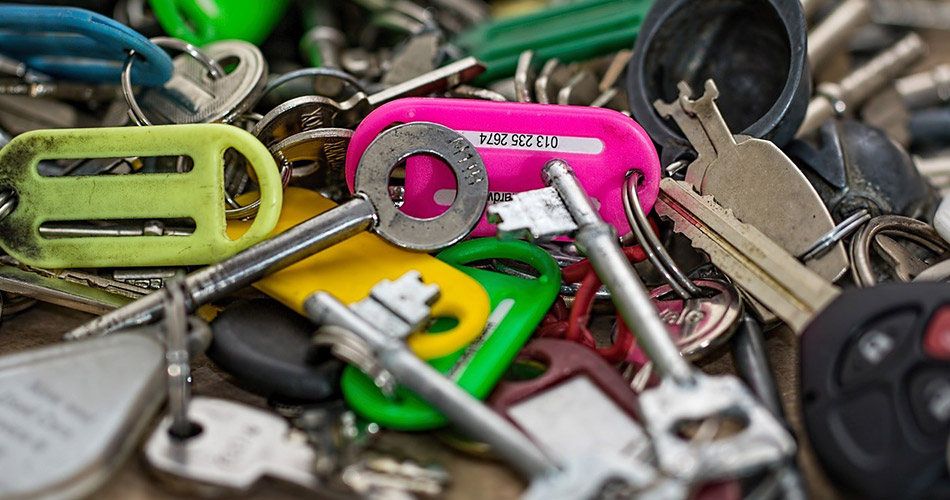


We have seen Electronic Key Management System (EKMS) provide a safe and secure solution to control usage and protect mechanical keys and/or plastic card keys. Since existing and new set-ups will continue to use keys/lock systems, due to it being extremely cost effective, we can safely say that EKMS is here to stay.
Keys are crucial to the protection and security of an organization and its assets, and provides access to machines, vehicles, restricted areas.
An excellent key control boosts the safety for workers and visitors, stores and tracks the usage of keys at all times, and only permits authorized and authenticated people to access the keys, minimizing loss and adverse circumstances.

Installing an effective and customized Electronic Key Management System contributes to the safety and security of the assets of an organization. This technology is seeing tremendous growth in various sectors. It’s a reliable and cost-effective method of enhancing building security by ensuring that facility keys are properly managed with regard to access, storage and tracking. It not just strengthens and supports access control policies that are already in place but also helps to reduce the costs associated with lost keys or un-managed access. Did I mention it’s extremely easy to implement too?
Let’s see some practices we can adopt to utilize an EKMS to its best potential capabilities.
Users can only access the stored keys or items that they have been authorized to remove or return. The data logging capabilities give you a quick picture of where your keys/assets are, who has custody, and when as well as by whom they have been used. Scheduled email reports, detailing what keys are in or out and who has/had them, keeps security management informed and up to date. Notifications advise users when an overdue key has been returned. In case of an incident, we can pull specific details up from the system during that time frame. Combined with the audit data from an access control system, a key control system’s customizable reports provide a strong evidence trail. If a vehicle has been damaged from recent use, the EKMS can be checked to see who used the car last.
Something as simple as labeling or tagging your keys can be tossing your security right out the window. You wouldn’t jot down your pin on your ATM/Debit card, giving a thief easy access to your bank account, would you? Instead, you can attach them to intelligent key fobs, which have an inherent digital code in them and the cabinet identifies the particular key as soon as the fob is inserted back into the cabinet, thereby eliminating the need for labels.
Depending on your company requirements, you will first need to install a network of compact key boxes or cabinets across your facility where they are routinely needed. You can install modules for storing keys or assets like cellphones, laptops, or even keep it empty for later unexpected uses. Lockers can be used for storing credit cards, small firearms, two-way radios, laptop computers, tablets, cash trays etc and the systems can be set up for personal use or shared use. We can customize access with options like built-in keypad, biometrics such as a fingerprint or eye scan reader; or a magnetic or proximity card reader. It can be set up such that employees can use their access control card, and system administrators can immediately assign an individual’s access authorizations, making for smoother operations. Networked systems allow keys to be returned to any key cabinet in the system.

An EKMS is designed to integrate with the existing physical security system without much fuss or cost. You can opt for intense security with a standalone unit with its own report generation system or you can integrate the unit(s) with the network. Their open protocols enable connectivity to access control, IP video surveillance, intrusion and fire alarm systems, and other systems for increased security and control. A person can not only be given access but also denied access as needed. Any information pertaining to not meeting curfew, unreturned key, security breach is immediately passed on to the access control system and alerts higher management. Such vigilance is crucial in protecting the company assets. Advanced technology has enabled key control systems to be monitored and administered remotely from a smartphone, tablet or desktop. In these times of Covid, this has been exceptionally handy as you can see real-time transactions and access all key and asset usage information from a remote location. Mobile applications have gained popularity as a preferred platform in recent times.
A simple but strong set of guidelines for administration and use of the key control system helps to define areas of responsibility and enable better control of the keys. By following the above practices, higher-level management can utilize EKMS as a tool for addressing the safety and security of building occupants and the security of the building assets. They can also be assured that new and innovative features will continue to be added, increasing the value of their investment.

Haven’t we all been shut out of our office accidentally or waited for someone to turn up with the keys to some room
Read More
The mainstay of Healthcare facilities is security, safety and health in order to provide the best care for their patients.
Read More
As we have seen, keys are an integral part of any organization, and every enterprise has to take measures to
Read More